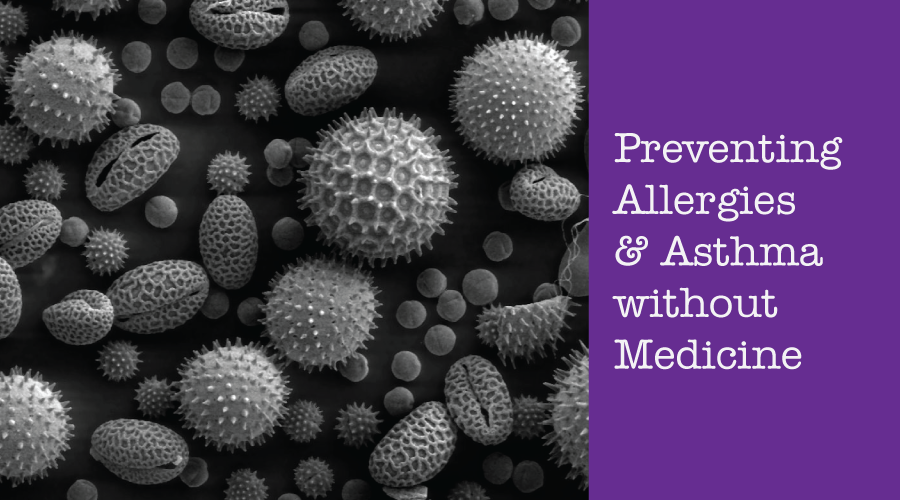Allergies and asthma are inflammatory conditions usually triggered by air- or food-borne pollens and chemicals called allergens. Allergens are absorbed into the blood (through the lungs, skin, or intestines), and cause the white blood cells of allergy-sufferers to produce billions of molecules of the allergic antibody IgE. The IgE molecules travel through the bloodstream until they combine with mast cells or basophils. Mast cells (which line many blood vessels) and basophils (a type of white blood cell in the bloodstream) are the main storage sites for histamine and serotonin. The IgE allergic antibody then causes the cell membranes of the mast cells/basophils to become leaky and allow the storage load of histamine and serotonin to pour into the surrounding blood and tissues. The IgE-released histamine and serotonin then produce the familiar allergic symptoms of runny and swollen nose, blocked sinuses, itchy eyes, skin blotches and/or hives, coughing and wheezing, etc.
Asthma is an allergic inflammation involving the lungs. During an asthma attack (which can be triggered by air- or food-borne pollen, dust, animal hair, chemicals, etc.), the millions of tiny air sacs within the lungs are constricted, seriously impairing breathing and causing a feeling of tightness in the chest.
 Common Medicine for Allergies and Asthma
Common Medicine for Allergies and Asthma
Allergy medications will not cure your allergies. They work to prevent or to relieve symptoms of an allergic reaction. Sometimes, you need to take more than one kind of allergy medicine to control all of your allergy symptoms. For instance, you may need both an antihistamine and a decongestant. Sometimes, the allergy medications themselves will be a combination of more than one kind of allergy medicine.
Many of these allergy medicines are available over the counter (OTC). There are also allergy medications that are available by prescription only.
Common medications used: antihistamines, decongestants, steroid sprays, and new class drugs like Singulair.
Asthma medicines are usually in 2 classes: preventer and rescue. The main types for these medications are: Inhaled corticosteroids, corticosteroid pills (such as Prednisone), long-acting bronchodilators, and combined treatments of both (such as Simbicort).
The list of side effects and potential issues for long term use – are too long for the purpose of this article.
There is an alternative to pharmaceutical therapy…
Quercetin
 Quercetin is one of a thousand or so members of the bioflavonoid family. This is a group of coloring pigments widely found throughout the plant kingdom, where they also provide plants with antioxidant protection against environmental stresses.
Quercetin is one of a thousand or so members of the bioflavonoid family. This is a group of coloring pigments widely found throughout the plant kingdom, where they also provide plants with antioxidant protection against environmental stresses.
How Quercetin works
Quercetin has a strong affinity for mast cells and basophils. It will stabilize their cell membranes, preventing them from spilling their pro-inflammatory, allergy-symptom load of histamine/serotonin into the surrounding blood and tissue in response to the IgE antibody. Without the release of these potent inflammatory mediators, the misery of allergies simply will not occur, even though you’ve inhaled the pollen, animal hair, or whatever normally triggers allergy attacks.
The potential benefit of quercetin in the prevention and treatment of asthma is that it suppresses the release and/or production of the two primary inflammatory mediators–histamine and leukotrienes–that cause the actual symptoms of asthma. Quercetin can greatly reduce the need for traditional asthma medicines when taken regularly over a period of time.
Many people remain virtually allergy and asthma free for several years through daily use of quercetin.
It is a preventative nutritional supplement, so it must be taken for at least one week before you see any benefit and is not a substitute for emergency circumstances.
It is truly a god-send to patients young and old alike. To learn more about treating allergies and asthma naturally contact us or speak to your practitioner.

